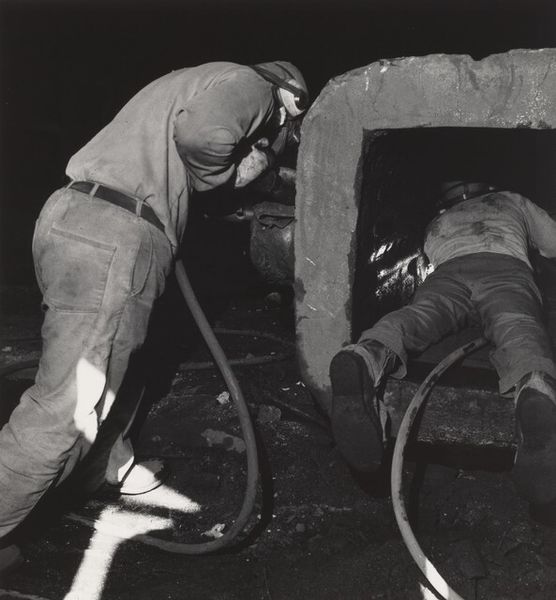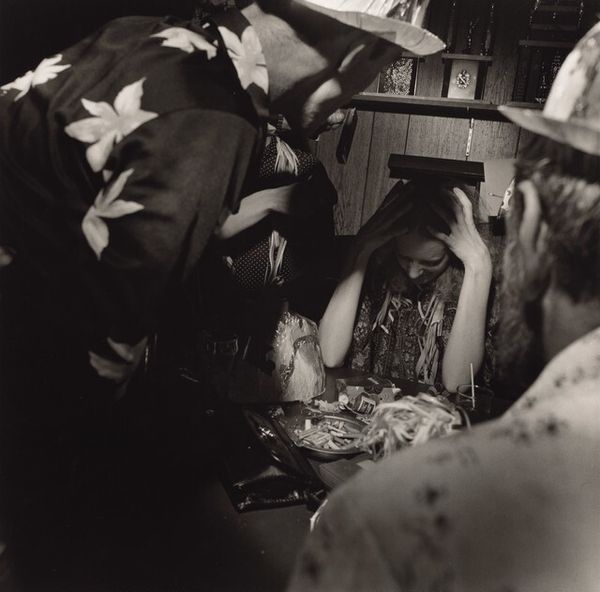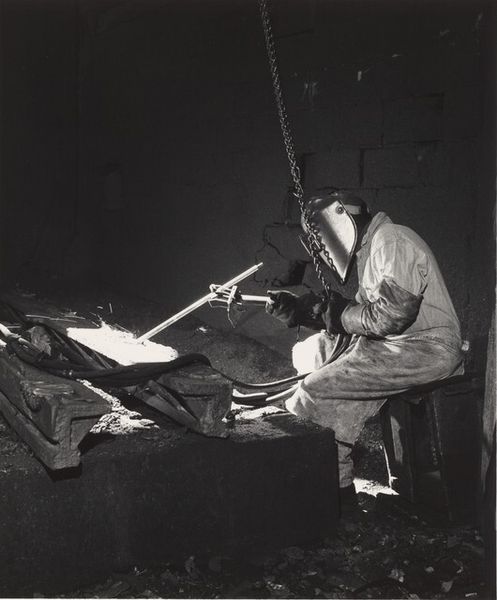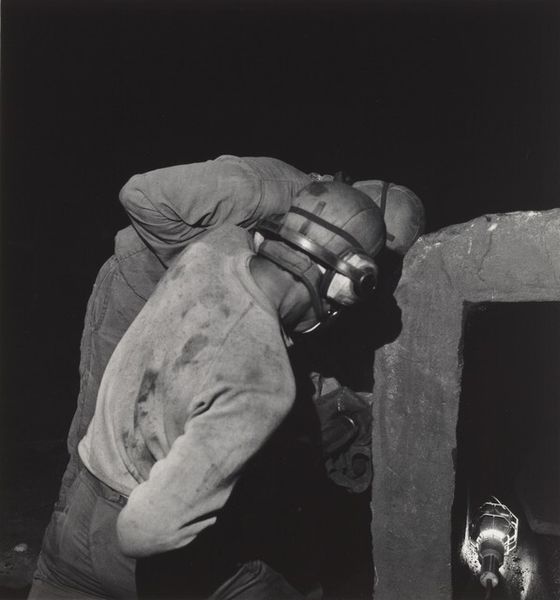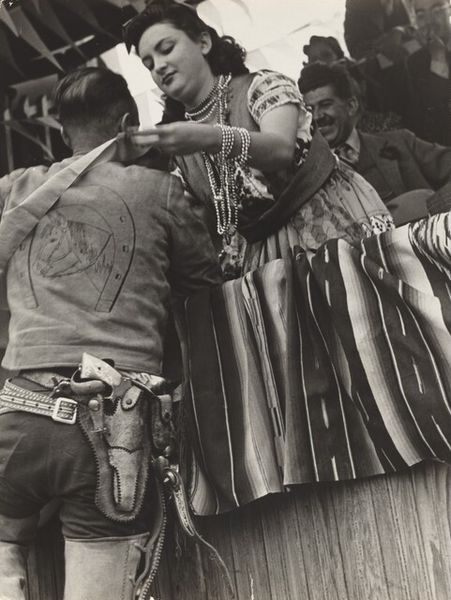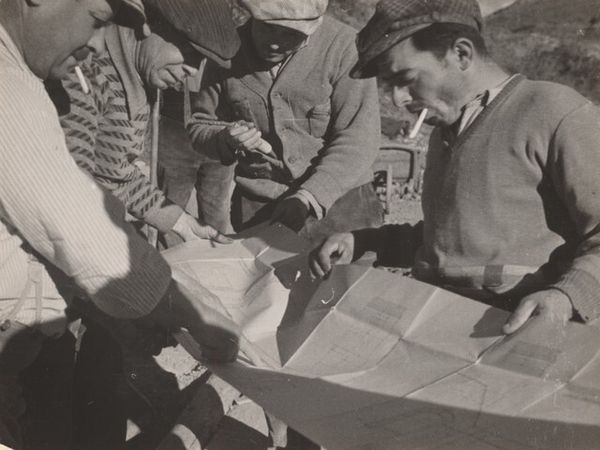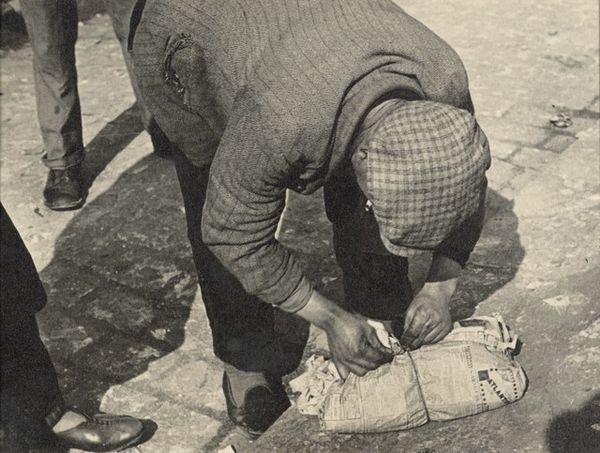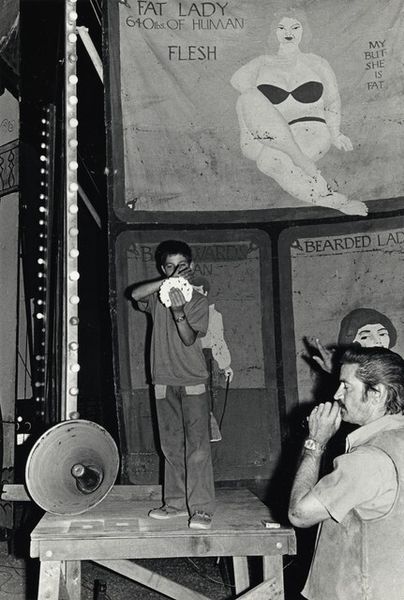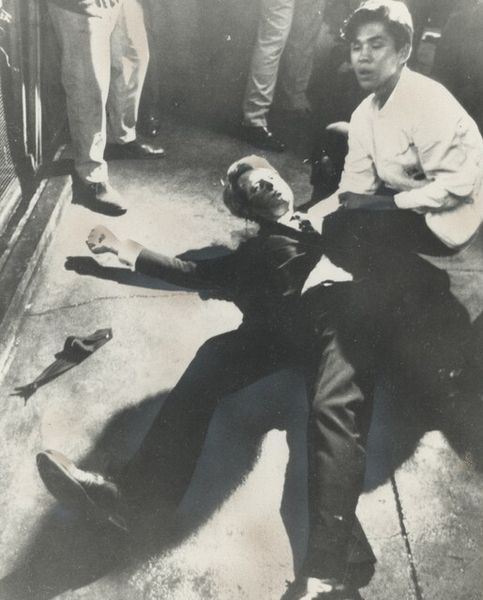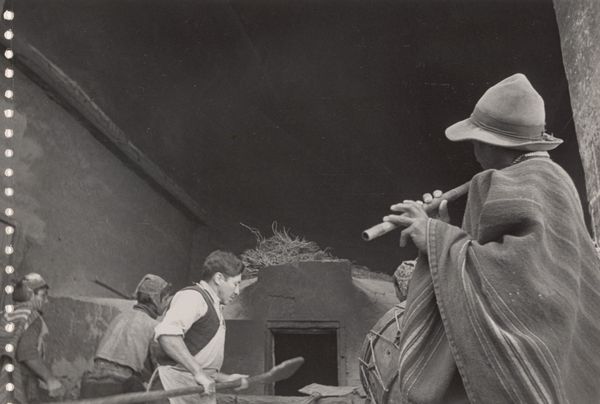
Untitled, Shenango Ingot Molds (Working People series) 1978 - 1981
0:00
0:00
photography
#
portrait
#
social-realism
#
photography
#
black and white
#
monochrome photography
#
genre-painting
#
monochrome
#
monochrome
Dimensions: image: 13.7 x 12.9 cm (5 3/8 x 5 1/16 in.) sheet: 17.7 x 14 cm (6 15/16 x 5 1/2 in.)
Copyright: National Gallery of Art: CC0 1.0
Curator: This photograph by Milton Rogovin, titled "Untitled, Shenango Ingot Molds (Working People series)," was created between 1978 and 1981. Editor: It's a stark, somber scene. The heavy contrast and monochrome palette lend an almost brutal feeling, evoking a sense of labor and its potential human cost. The workers in masks, dwarfed by the industrial object they are attending to, feels unsettling. Curator: Rogovin consistently returned to the archetype of working people, creating multiple portraits in various places. What does that reveal to you about continuity and meaning? Editor: I see a powerful visual testament to the resilience and struggle of the working class, particularly during periods of deindustrialization. It documents how working conditions strip workers of their individual humanity. These masks aren't about safety alone; they become symbols of alienation within capitalism's larger forces. Curator: Absolutely. The masks can symbolize, perhaps, the archetype of the worker obscured behind labor, and the cultural amnesia around specific sites of making as industry transforms. Consider too that light is emerging from within this crucible, suggesting some symbolic rebirth through fire. Editor: Or consider that this photograph aestheticizes exploitation! There is such a fine line, and I wonder about Rogovin’s own potential complicity within the dynamics he is representing, especially when considering the social-realist style. Did the aestheticizing tendencies run the risk of undermining the agency of these workers? Curator: Well, in other series Rogovin created intimate portraits. This series zeroes in on this crucible that suggests transformation. So it begs the question: what gets transmuted, or perhaps destroyed, when humans labor in factories? Editor: Yes, what emerges from this crucible is as important as what's fueling the fire—and it makes you wonder about how these forms of work impact these particular individuals and society more broadly. Thanks for letting me consider the other portrait work, that is helpful to better see its possible meanings. Curator: Indeed, by focusing on a symbolic element –the mold— we might appreciate the labor without romanticizing exploitation or specific historical narratives. Editor: It's a difficult, powerful photograph that raises far more questions than it answers, for sure.
Comments
No comments
Be the first to comment and join the conversation on the ultimate creative platform.
